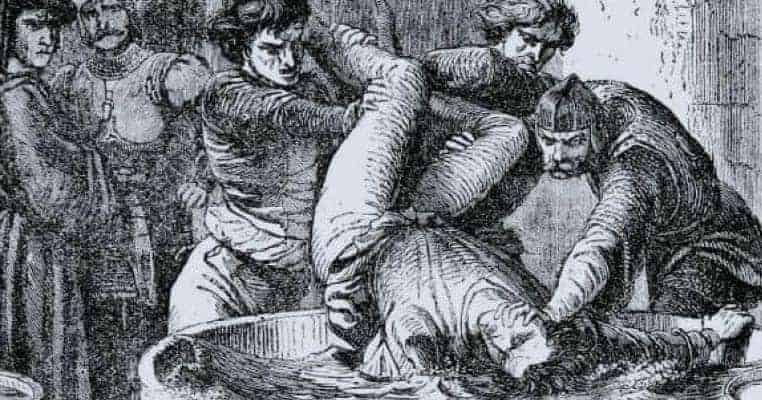“From the Devil we sprang, and to the Devil we shall return” – king Richard the Lionheart, referring to his Plantagenet family.
Many contemporaries thought there was something demonic about England’s Plantagenet Dynasty (1154 – 1485), who named themselves after the planta geneste, or common broom, and went at everything full tilt. They were known for their manic energies, and a seeming inability to just sit still. They revolutionized and remade England. They dominated the British Isles by conquering Wales, cowing Scotland, and subduing Ireland. They created an empire stretching from Ireland to the Spanish border, and devastated France in the Hundred Years War. Europe proving too small, the Plantagenets exported their manic energies to the Middle East, where they wreaked havoc during the Crusades.
They were also known for their fierce intra-familial rivalries, which doomed and brought their dynasty to a dramatic end. Where others tried to take them down, and failed, the Plantagenets proved quite capable of taking themselves down. As with everything else they did, they approached the task of self-destruction by going at each other full tilt.
Following are ten historic snapshots of the rise and fall of the Plantagenet Dynasty.
Prelude: The Norman Conquest of Anglo-Saxon England
The Plantagenet era was preceded by the Norman conquest of England, which was triggered in 1066 when Anglo-Saxon England’s king Edward the Confessor died childless. A powerful Anglo-Saxon lord, Harold Godwinson, Earl of Wessex, was then crowned as king. Harold’s title was disputed, however, by his younger brother, Tostig, and by Duke William of Normandy. The latter was related to Edward the Confessor, and claimed that he had been promised the English throne upon Edward’s death.
King Harold gathered his forces in readiness for a seaborne invasion from Normandy by Duke William, but contrary winds kept the Normans on the other side of the English Channel. It would be Harold’s brother, Tostig, who would strike first. Allied with the Norwegian king Harald Hardrada, Tostig landed with a largely Scandinavian army near York, in northern England.
Harold, who had been waiting in southern England for an invasion from Normandy, led a forced march north to meet his brother and the Norwegian king. In a hard fought battle at Stamford Bridge on September 25th, 1066, Harold won a decisive victory in which Tostig and Harald Hardrada were killed. The invading army had arrived in 300 ships. Only 24 were needed to carry the survivors back to Norway.
Two days later, the Channel winds finally changed, allowing Duke William to finally land his army in southern England. Harold was forced to assemble his weary troops, and retracing his steps, he led them on another forced march back to the south of England. He gathered reinforcements along the way as he rushed to meet the new invasion.

At the Battle of Hastings on October 14th, 1066, the Anglo-Saxons formed a shield wall atop a ridge. The battle began with mounted charges by Norman knights, which were beaten back. However, a pair of feigned retreats drew many of Harold’s men from their battle lines into disastrous pursuits, that ended with the pursuers getting surrounded and destroyed. That thinned the Anglo-Saxon lines, and by late afternoon, Harold was hard pressed, when he was killed by a random arrow striking him in the eye. The leaderless Anglo-Saxons fought until dusk, then broke and scattered.
William then took London and crowned himself king William I, with momentous consequences. Centuries of Anglo Saxon independence came to an end, to be replaced by Norman rule. For generations, England had been oriented towards the Germanic world from whence the Anglo-Saxons came, and after the Viking Era began, to the North Sea and Scandinavia. William and the Normans began to reorient England towards France, the Western European mainstream, and the Mediterranean world. The Plantagenets would complete that reorientation.

